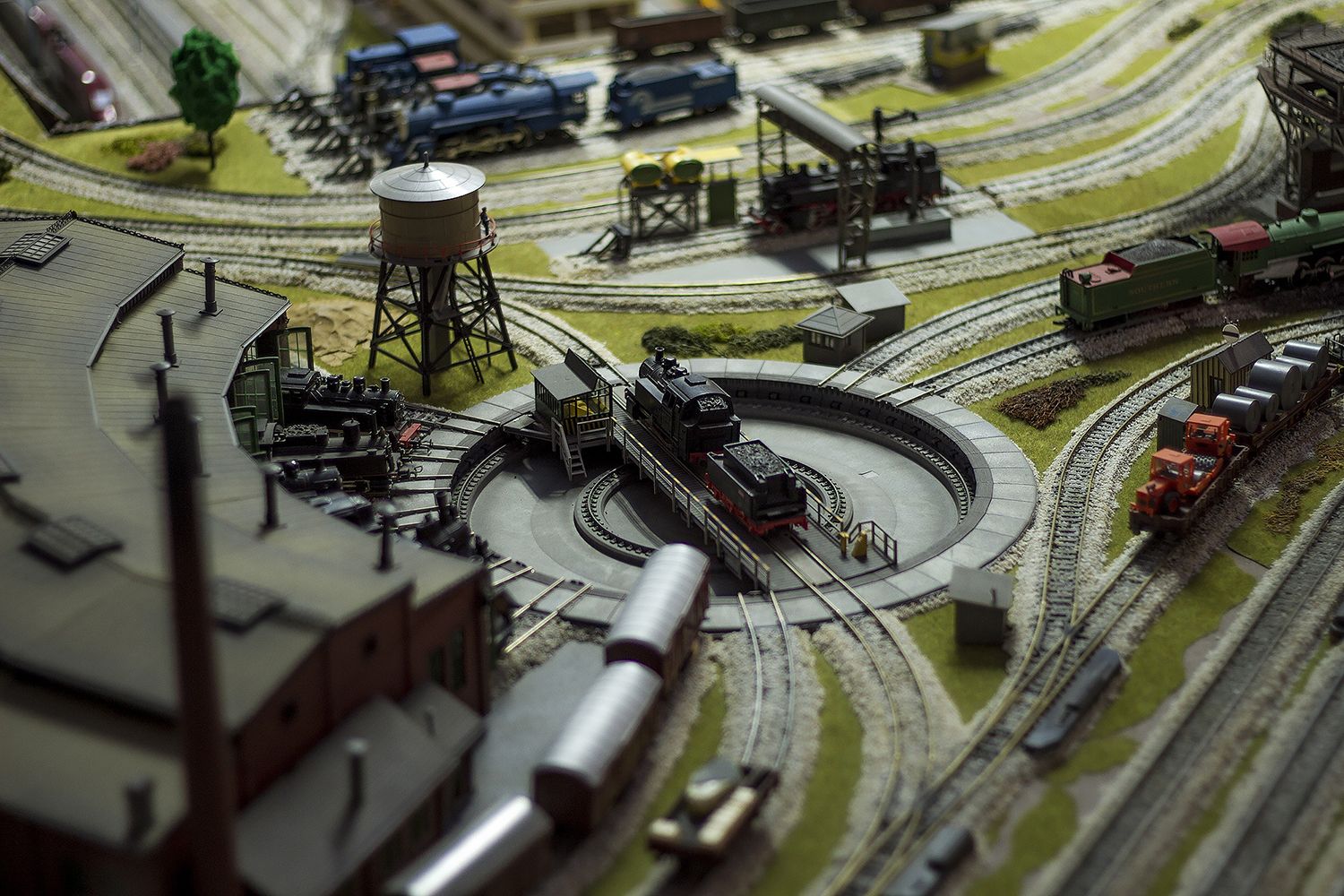The Best Place to Build a Model Railway
When building a model railway your first task will be to determine the best place to build it. There's many potential options – lofts, garages, basements or spare rooms. The ideal location for you will be determined by personal preference, what is available, and any restrictions in terms of space.

When planning to build a model railway your first task will be to determine the most suitable place to build it. There are many potential options – lofts, garages, basements or spare rooms. The ideal location for you will of course be determined by personal preference, what is available to you, and any restrictions in terms of space.
There are some general requirements for a location in order for a successful model railway build to take place. The area should be somewhere that is of a suitable temperature and humidity. This is an important point – layouts can easily be ruined by extreme heat, cold and humidity. Mains electricity should be available and the area should be somewhat practical and easily accessible.
Let’s take a look in more detail at the best place to build a model railway and some of the pros and cons of each option:
Spare Rooms
This is probably the most common choice among model railway engineers, and for good reason. A spare room will have all the essentials needed to build a reliable layout that will run for many years without major problems. They will most likely have electricity and central heating already installed, along with suitable flooring or carpet. A spare room will also be free from extreme fluctuations in temperature and humidity, significantly reducing the chance of excessive dust, insects or mould arriving. This makes the spare room one of the best choices in which to build a model railway layout. One of the potential downsides to using a spare room for running model trains is that they are often one of the smallest rooms in the house so you may be restricted in terms of space. You will also need to consider if you may need to turn this room back into a living space should your family grow or you sell the property in the future.
Annexes
Very similar to spare rooms. One potential issue is that, depending on its former use and when it was built, there may be a lack of central heating within an annex. In this case, you may need to get dedicated heaters or have central heating installed off the main house supply.
Attics/Lofts
Another very popular choice as the best place to build a model railway. Attics have the advantage of being out of the way, and as a result don’t take up space in a spare room that could be used as living space. Depending on the size of the house overall, they can offer a large area in which to build a model railway. However, they are susceptible to extremes in temperature and humidity, and can be very warm in summer. A window, skylight or air conditioning will help alleviate this problem, though the latter is an expensive solution. You will also need to consider whether the attic has mains power and if there is flooring installed – this will need to comfortably support sufficient weight. Also remember that using a loft for a model railway will reduce available home storage space.
Garages
Garages are similar to attics and lofts in that they are also susceptible to fluctuations in temperature and humidity, though they usually don’t suffer from extreme heat in summer. Mains electricity will usually already be connected, although some form of heating will be required. Garages are usually more susceptible to dust due to having concrete floors and wind currents blowing through the main door. One solution, if you don’t need the garage for any other use, is to convert it into a ‘room’ by sealing the main door and laying down some form of carpet or flooring. This will should eliminate the dust problem and help prevent spiders and other insects from entering.
Sheds
Model railways can also be built in garden sheds, however there are several challenges associated with this. Sheds will suffer from the aforementioned issues regarding temperature and humidity, so good quality insulation will need to be installed, along with some form of heating and ventilation. Another issue is security – be sure to fit blinds or cover any windows to protect your model railway layout from prying eyes and prevent opportunistic theft. A sturdy door and locking mechanism is also essential. It is advisable not to keep any model trains or expensive tools in the shed when you are not working on or operating the layout.
If you have a sufficiently large garden there are dedicated insulated sheds or log cabins available to purchase. These are larger, more secure, and generally of better build than your typical garden shed. Whilst they can be expensive, they are usually of excellent quality and will last many years. They are available fully insulated and some come with integrated electrical sockets – though mains power will still need to be connected. If going down this route, you will need to check whether you need any planning permission – this usually depends on the height but the rules will vary depending on your country or jurisdiction.
Basements
Basements have the same advantage as attics/lofts in that they are out of the way and do not take up living space. However, whilst they are usually at a relatively constant temperature throughout the year, they commonly suffer from the same problem of humidity. This can be alleviated by using a dehumidifier, and whilst modern variants are energy efficient, this will still contribute to an increase in your electric bill.

